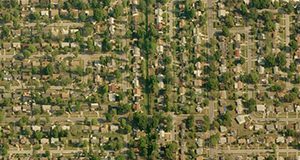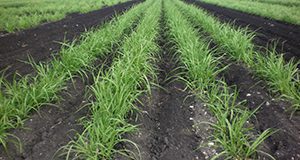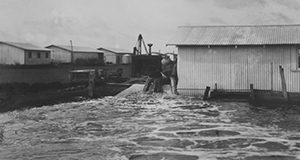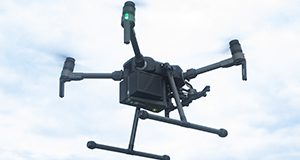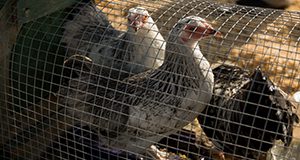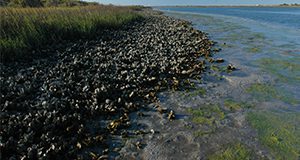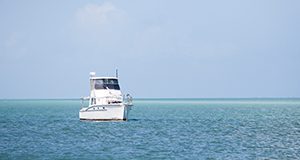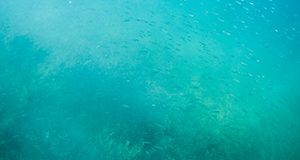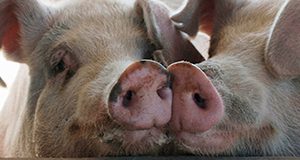This 8-page document gives an overview of Florida temperature and rainfall during the past 20 years based on historical FAWN data to provide information about the temporal and spatial trends of Florida weather and the frequency and size of extreme weather events such as heavy rainfall and drought. This document also investigates the characteristics of drought and heavy rainfall in relation to hurricanes and tropical storms. Written by Satbyeol Shin, Young Gu Her, Geraldina Zhang, and William Lusher, and published by the UF/IFAS Department of Agricultural and Biological Engineering, January 2020.
https://edis.ifas.ufl.edu/ae537
Author: Amanda Quintos
Residential Irrigation Water Costs in Osceola County and Orange County, Florida
Interest in understanding water use and irrigation costs has risen in recent years. This case study is a 5-page evaluation of water use and associated costs for residential landscape irrigation in Osceola County and Orange County, Florida. Homeowners in central Florida can use the results to assess their water consumption and bills in relation to similar homes in the area. Written by Nick Taylor, Tricia Kyzar, Pierce Jones, and Kaitlin O. Robb Price, and published by the UF/IFAS Department of Agricultural and Biological Engineering, December 2019.
https://edis.ifas.ufl.edu/ae536
Sugarcane Cultivar Descriptive Fact Sheet: CP 06-2400, CP 06-2042, and CP 07-2137
This 5-page fact sheet provides basic information and yield and disease information for CP 06-2400, CP 06-2042, and CP 07-2137 to assist growers in better selection and management of these cultivars. Written by Hardev Sandhu, Matt VanWeelden, and Wayne Davidson, and published by the UF/IFAS Agronomy Department, December 2019.
http://edis.ifas.ufl.edu/sc106
Hurricane Preparedness for Forage Crops in the Southeast United States
This 4-page document provides information on preparing forage crops, conserved forage, and grazing areas for potential hurricane damage and alleviating hurricane damage on forage crops and grazing lands in the Southeast United States, with an emphasis on the Florida peninsula and Gulf Coast. Written by José C. B. Dubeux, Jr. and Edward K. Twidwell, and published by the UF/IFAS Agronomy Department, November 2019.
http://edis.ifas.ufl.edu/ag439
Preflight and Flight Instructions on the Use of Unmanned Aerial Vehicles (UAVs) for Agricultural Applications
This 5-page document provides guidance on the appropriate use of unmanned aerial vehicles (UAVs) for agricultural applications in Florida. It contains step-by-step instructions for preparing a UAV for flight, creating a mission path (using flight mission planning apps), and collecting UAV-based data. Written by Sri Charan Kakarla, Leon De Morais Nunes, and Yiannis Ampatzidis, and published by the UF/IFAS Department of Agricultural and Biological Engineering, November 2019.
http://edis.ifas.ufl.edu/ae535
Raising Backyard Chickens for Eggs
Raising backyard chickens is an increasingly popular way to explore self-sufficiency, connect with how our food is produced, and gain experience for future dabbling in food production. This 13-page publication is designed primarily for those considering raising backyard chickens for eggs for personal consumption. Written by Mary E. Henry, Jessica M. Ryals, Alicia Halbritter, and Derek L. Barber, and published by the UF/IFAS Department of Animal Sciences, revised November 2019.
http://edis.ifas.ufl.edu/an239
Postflight Data Processing Instructions on the Use of Unmanned Aerial Vehicles (UAVs) for Agricultural Applications
Remote sensing applications for agriculture often require periodically collected high-resolution data, which are difficult to obtain by manned flights or satellite imagery. This 6-page document provides guidance on the use of post-processing software to visualize data collected by unmanned aerial vehicles (UAVs) for agricultural applications. It provides step-by-step instructions for using the data collected from a UAV flight to create several types of maps and indices. Written by Sri Charan Kakarla and Yiannis Ampatzidis, and published by the UF/IFAS Department of Agricultural and Biological Engineering, October 2019.
http://edis.ifas.ufl.edu/ae533
Cetaceans 4th Grade Curriculum–Lesson 9: How Do Whales Stay Warm?
This 9-page document is the ninth lesson in the Cetaceans 4th Grade Curriculum. It will help students investigate the roles that blubber, body shape, and body size play in preventing heat loss in marine mammals. Written by Maia Patterson McGuire and Ruth Francis-Floyd, and published by the UF/IFAS Veterinary Medicine–Large Animal Clinical Sciences Department, June 2019.
http://edis.ifas.ufl.edu/vm234
Cetaceans 4th Grade Curriculum–Lesson 16: North Atlantic Right Whales and Ship Strikes
This 7-page document is the sixteenth lesson in the Cetaceans 4th Grade Curriculum. It will help students learn why ship strikes are a threat to North Atlantic right whale survival, and what conservation measures are in place to reduce this threat. Written by Maia Patterson McGuire, Jessica Hardy, Brenda Cannaliato, and Ruth Francis-Floyd, and published by the UF/IFAS Veterinary Medicine–Large Animal Clinical Sciences Department, June 2019.
http://edis.ifas.ufl.edu/vm241
Cetaceans 4th Grade Curriculum–Lesson 4: How Big Are Cetaceans?
This 12-page document is the fourth lesson in the Cetaceans 4th Grade Curriculum. It will help students gain an understanding of the size of different cetaceans through engaging activities. Written by Maia Patterson McGuire and Ruth Francis-Floyd, and published by the UF/IFAS Veterinary Medicine–Large Animal Clinical Sciences Department, June 2019.
http://edis.ifas.ufl.edu/vm229
Cetaceans 4th Grade Curriculum–Lesson 12: Identifying Individual North Atlantic Right Whales
This 4-page document is the twelfth lesson in the Cetaceans 4th Grade Curriculum. It will help students learn about the New England Aquarium’s right whale database and match photographs of individual right whales. Written by Maia Patterson McGuire, Ruth Francis-Floyd, and Brenda Cannaliato, and published by the UF/IFAS Veterinary Medicine–Large Animal Clinical Sciences Department, June 2019.
http://edis.ifas.ufl.edu/vm237
Cetaceans 4th Grade Curriculum–Lesson 8: Food Chains
This 6-page document is the eighth lesson in the Cetaceans 4th Grade Curriculum. It will help students identify components of baleen and toothed whale food chains and trace energy flow. Written by Maia Patterson McGuire, Brenda Cannaliato, and Ruth Francis-Floyd, and published by the UF/IFAS Veterinary Medicine–Large Animal Clinical Sciences Department, June 2019.
http://edis.ifas.ufl.edu/vm233
Cetaceans 4th Grade Curriculum–Lesson 3: Researching Individual Whale and Dolphin Species
This 55-page document is the third lesson in the Cetaceans 4th Grade Curriculum. It will help students learn about individual cetacean species through a game. Written by Maia Patterson McGuire and Ruth Francis-Floyd, and published by the UF/IFAS Veterinary Medicine–Large Animal Clinical Sciences Department, June 2019.
http://edis.ifas.ufl.edu/vm228
Cetaceans 4th Grade Curriculum–Lesson 2: Cetaceans–What Makes a Whale a Whale?
This 7-page document is the second lesson in the Cetaceans 4th Grade Curriculum. It will help students learn about general whale and dolphin biology. Written by Ruth Francis-Floyd and Maia Patterson McGuire, and published by the UF/IFAS Veterinary Medicine–Large Animal Clinical Sciences Department, June 2019.
http://edis.ifas.ufl.edu/vm227
Cetaceans 4th Grade Curriculum–Lesson 1: Starting to Learn about Whales
This 14-page document is the first lesson in the Cetaceans 4th Grade Curriculum. It will help students start to learn about whales and practice reading comprehension and writing skills. Written by Maia Patterson McGuire and Ruth Francis-Floyd, and published by the UF/IFAS Veterinary Medicine–Large Animal Clinical Sciences Department, June 2019.
http://edis.ifas.ufl.edu/vm226
Cetaceans 4th Grade Curriculum–Outline
The Cetaceans 4th Grade Curriculum provides a series of individual lessons covering cetacean (whale and dolphin) biology and ecology. The curriculum uses charismatic megafauna to engage students and inspire them to want to learn more. This 3-page document provides a brief overview of the Cetaceans 4th Grade Curriculum. Written by Maia Patterson McGuire and Ruth Francis-Floyd, and published by the UF/IFAS Veterinary Medicine–Large Animal Clinical Sciences Department, June 2019.
http://edis.ifas.ufl.edu/vm225
Cetaceans 4th Grade Curriculum–Lesson 13: North Atlantic Right Whale Migration
This 6-page document is the thirteenth lesson in the Cetaceans 4th Grade Curriculum. It contains information that will help students learn about the migration path of North Atlantic right whales and the ways researchers are studying the movement of these whales. Written by Maia Patterson McGuire and Ruth Francis-Floyd, and published by the UF/IFAS Veterinary Medicine–Large Animal Clinical Sciences Department, June 2019.
http://edis.ifas.ufl.edu/vm238
Cetaceans 4th Grade Curriculum–Lesson 7: How Do Whales Eat?
This 10-page document is the seventh lesson in the Cetaceans 4th Grade Curriculum. It contains information that will help students learn the differences between how baleen and toothed whales feed. Students will also learn how sound waves are used for echolocation. Written by Maia Patterson McGuire and Ruth Francis-Floyd, and published by the UF/IFAS Veterinary Medicine–Large Animal Clinical Sciences Department, June 2019.
http://edis.ifas.ufl.edu/vm232
Common Hazards to Consider during Manufacturing of Feeds for Swine
This 8-page document discusses common biological, chemical, and physical hazards that may need preventive measures during the manufacture of swine feeds. Written by Taylor Langford, Morgan McKinney, Chad Carr, and Jason M. Scheffler, and published by the UF/IFAS Department of Animal Sciences, September 2019.
http://edis.ifas.ufl.edu/an357
Cetaceans 4th Grade Curriculum: Lesson 6: Cetacean Behaviors
This 4-page document is the sixth lesson in the Cetaceans 4th Grade Curriculum. It contains information that will help students learn about whale and dolphin behaviors. Written by Ruth Francis-Floyd and Maia Patterson McGuire, and published by the UF/IFAS Veterinary Medicine–Large Animal Clinical Sciences Department, June 2019.
http://edis.ifas.ufl.edu/vm231

